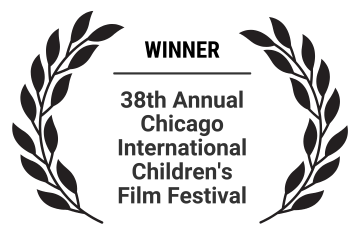Mary Anning - A fossil hunter's story

A fossil hunter’s story project resources - overview
Our award-winning film, SEA DRAGON, sets the scene for the whole project, introduces Mary, and reflects the themes and main ideas being addressed through the learning activities.
This interactive resource features a series of nine core and six enrichment activities presented as four topics: Fossil hunter Mary; Strange creatures; The end of the line; and Evidence, beliefs and ideas. Collectively these activities give insights into Mary’s life, explore the science of fossils and reflect on the influence of historical, cultural and religious thinking in changing ideas.
Together the learning activities develop three themes:
- Mary Anning, fossils and evolution covering the significance of fossils in our understanding of evolution and the role Mary Anning played in this (content knowledge)
- The value of engaging with enquiry (procedural knowledge)
- The nature of scientific, historical and religious knowledge (epistemic knowledge)
The activities support the use of dialogic teaching, in which children express and share their ideas in group or whole class discussion and teachers encourage children to explain their thinking. The enquiry-based approach emphasises the role in learning of the identification of questions, and the collection and use of evidence in seeking answers.
The activities are designed to be used flexibly, mainly in science lessons but in some cases are equally appropriate in history, religious education and English. Each activity includes key questions, curriculum links and vocabulary, what children do and learn, classroom resources plus background information for teachers.
‘This project enabled children to look at science from a much broader perspective. It challenged their existing ideas and prompted them to raise questions and have very meaningful class discussions’.
‘I loved the fact that this project inspired and engaged not only children but also the staff. As a science leader, this was excellent CPD for my team’.
- Feedback from pilot project teachers
‘You have to think harder. It opens your mind to think of things that are out of the box which might eventually lead to an answer. I felt that it was interesting as it merges lots of different things in one. You were learning lots of things in one subject. By putting it together it was easier to remember all the things together rather than learning about them separately’.
‘I liked how did we history and RE along with science – I preferred it to the other science topics we have done. I really liked how it combines’.
- Feedback from pupils
STE article Learning from the Mary Anning Project also takes a closer look at feedback from teachers and how the project is relevant for teacher educators.
Not a member of ASE?
Membership rates for ASE were revised significantly in 2023 and now range from free to £45 per year depending on the type of membership. In addition to our regular newsletter, as a member you'll have access to discounted CPD and free local TeachMeets, a wealth of online resources and guidance, our free termly and 'add on' journals, book discounts, public liability insurance and access to professional registration. Plus you'll be joining a community of supportive science education professionals, helping also to add your voice and support our work to advocate for the profession.
Professor Derek Bell, Marianne Cutler, Professor Wynne Harlen and Stuart Naylor, with Karen Shoebottom.
Our thanks go to Hester Binge, Richard Bizley, British Science Association, Tracy Chevalier, Lawrie Doran, Dean Lomax, Charmouth Heritage Coast Centre, Clemens Majunke, Terhi Kylliainen, Felix Levinson, Geological Society of London, James Morgan, Jurassic Coast Trust, Natural History Museum, Teacher Scientist Network and Bonnie Zahl; and to our Advisory group of Professor Berry Billingsley, Naomi Hiscock, Daniel Hugill, Professor Chris King, Professor Tom McLeish, Professor Michael Reiss (Chair), Michael Riley and Dr James Williams.
Arundel C of E Primary School, West Sussex; Bromley High GDST, Greater London; Bures CEVC Primary, Suffolk; Cutteslowe Primary School, Oxford; Downton Primary School, Wiltshire; Exeter Road Community Primary School, Exmouth; Fairford Primary School, Gloucester; Heathfield Knoll School and Nursery, Kidderminster; Howes Primary School, Coventry; Kingsmead Primary School, Northwich; Mearns Primary School, East Renfrewshire; Micklem Primary School, Hemel Hempstead; Millbrook Park C of E Primary School, London; Parkgate Primary School, Southampton; Rosehill Methodist Primary Academy, Ashton-under-Lyne; Sandfield Close Primary School, Leicester; Semley CE VA Primary School, Wiltshire; St Bernadette's Catholic Primary School, Birmingham; St Blaise C of E Primary Abingdon, St Edward's Catholic Primary School, Birmingham; St Mary's Primary School, Bridport; St Peter's Catholic Primary School, Marlow










